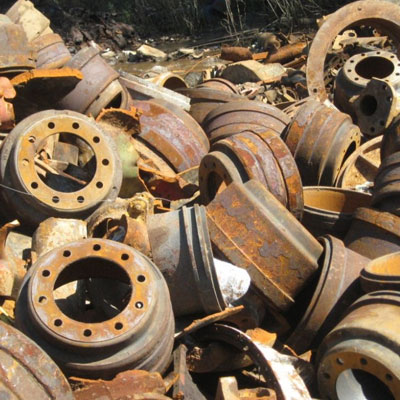In the quest for a sustainable future, one often thinks of renewable energy, carbon emissions, and conservation of natural resources. However, there is a silent hero in this sustainability narrative – metal recycling. The importance of metal recycling goes beyond mere environmental consciousness; it is a fundamental pillar in building a sustainable and resilient world.
Preserving Finite Resources
Metals are finite resources, and the extraction process can be ecologically devastating. Mining operations result in deforestation, habitat destruction, and soil erosion. By recycling metals, we mitigate the need for extensive mining, preserving natural ecosystems and reducing the overall environmental footprint.
Take aluminum, for instance, a widely used metal in various industries. The extraction of aluminum from bauxite ore is energy-intensive and contributes significantly to greenhouse gas emissions. Recycling aluminum requires only a fraction of the energy needed for primary production, making it a compelling solution to conserve energy resources and reduce pollution.
Energy Conservation and Emission Reduction
Metal recycling plays a pivotal role in energy conservation. Extracting metals from raw ore demands substantial energy inputs, often sourced from fossil fuels. By recycling, we reduce the demand for primary production, subsequently lowering energy consumption and minimizing carbon emissions. This is particularly crucial in the context of climate change, where every effort to reduce greenhouse gas emissions counts.
Steel, one of the most recycled materials globally, offers a prime example. The recycling process for steel requires significantly less energy compared to its primary production, leading to a substantial reduction in carbon dioxide emissions. Embracing metal recycling as a standard practice can, therefore, contribute significantly to global efforts to combat climate change.
Economic Benefits and Job Creation
Beyond environmental advantages, metal recycling is an economic boon. The recycling industry creates jobs at various stages, from collection and sorting to processing and manufacturing. In the United States alone, the scrap recycling industry supports over 500,000 jobs and generates billions of dollars in economic activity. By investing in metal recycling infrastructure, nations can stimulate economic growth while fostering sustainable practices.
Moreover, recycled metals often come at a lower cost than newly extracted ones, providing cost-effective raw materials for various industries. This cost efficiency not only benefits manufacturers but also contributes to overall economic stability.
Reduction of Landfill Burden
Metal waste, if not recycled, finds its way into landfills, contributing to the global waste crisis. Unlike organic waste, metals do not decompose. Instead, they persist in landfills for centuries, leaching harmful substances into the soil and water. By recycling metals, we not only divert significant amounts of waste from landfills but also reduce the environmental hazards associated with metal disposal.
Promoting Circular Economy
Metal recycling is a cornerstone of the circular economy, a model that emphasizes minimizing waste and making the most of resources. Instead of the linear ‘take-make-dispose’ approach, a circular economy envisions a closed-loop system where materials are recycled and reused continuously. Metal recycling aligns seamlessly with this philosophy, embodying a sustainable approach that maximizes the utility of resources and minimizes environmental impact.
Conclusion
The importance of metal recycling cannot be overstated in the journey towards a sustainable future. It is an integral part of the broader effort to conserve resources, reduce energy consumption, cut emissions, and create a circular economy. Governments, industries, and individuals must collaborate to enhance metal recycling infrastructure, promote awareness, and make conscious choices that lead us towards a more sustainable and resilient world. By recognizing the significance of metal recycling, we empower ourselves to forge a future where environmental preservation and economic prosperity coexist harmoniously.



